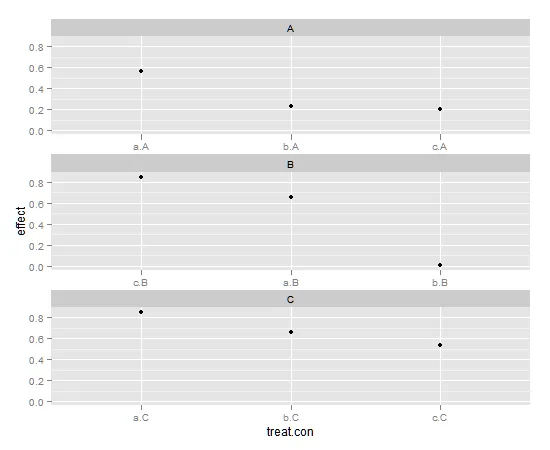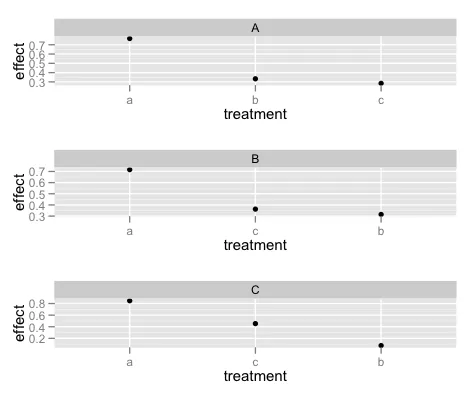我有一个简单的例子——一个完全交叉的三种治疗方法和三个情境实验,每种治疗方法在每个情境下都有一个连续效应被测量。我想要分别按照每个情境对每种治疗方法的效果进行排序,但是我卡在了ggplot的分面问题上。
以下是我的数据
df <- data.frame(treatment = rep(letters[1:3], times = 3),
context = rep(LETTERS[1:3], each = 3),
effect = runif(9,0,1))
如果我将处理和上下文合并为一个9分制,那么我可以得到非常接近的结果,如下所示:
df$treat.con <- paste(df$treatment,df$context, sep = ".")
df$treat.con <- reorder(df$treat.con, -df$effect, )
ggplot(df, aes(x = treat.con, y = effect)) +
geom_point() +
facet_wrap(~context,
scales="free_x",
ncol = 1)

